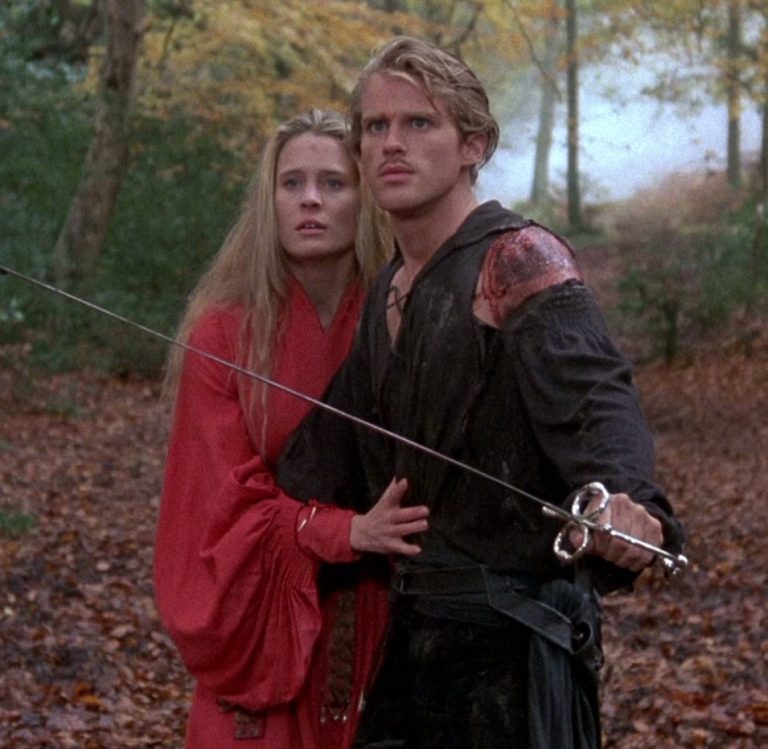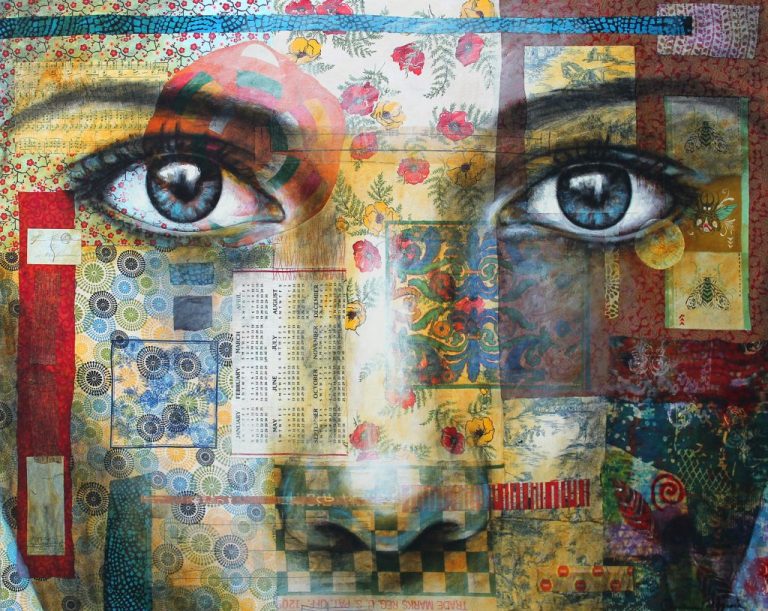Scene Structure: Understanding the Truth about Character Arcs
For this week’s Throwback Thursday, we’re looking at excerpts from past posts on Live Write Thrive that tie in with our exploration on scene structure. Revealing the gradual transformation of a character from one scene to the next requires understand character arcs.
From The True Essence of Character:
Persona vs. Essence
All of us are flawed. Over the years, since childhood, we have developed a “face” we present to the world. Often that face is formed by hurts we’ve suffered early on. We start out all innocent and sweet, and then after a few of life’s hard knocks, we hide behind a persona that feels safe. A true hero’s journey will show the process of the hero moving from his persona to his true essence by the end of the story. And this is a great model for novelists.
Almost all great stories show the protagonist at the start of the book in his normal world. This is the place in which he functions, interacts with others, and makes his way through life. But if you’re telling a rich story, there’s going to be something wrong with this picture. Even if this character seems happy, we can tell he’s really not. And it really doesn’t have to do with his visible goal established at the outset. Oh, they are interconnected, and the goal should be a vehicle for helping your character “find himself.” But reaching his visible goal isn’t the real thing that will make him truly happy. Every person who is not living in his or her true essence is going to be unhappy.
So your character should reveal this in the first chapter somewhere. Not that they’re miserable and glum. You can have a really happy character step onto the stage. What I’m talking about here is showing some aspect of the character’s persona (the face he presents to the world) that is not really him, not how he truly feels, and is the source of some dissatisfaction in his life because, well, he’s being phony in at least some way.
Who Really Is My Hero?
Here’s a question you can ask: “Who would my hero be if he could really find the courage to [or was forced to] strip away his outward personality and reveal his true self?” A great story hints at the start that the protagonist has the potential to be something else, something better, something more true. This ties in with last week’s post about the glimpse of greatness. Readers love to see something redeemable in humanity. Even with the darkest of antagonists, there’s nothing richer and more engaging than seeing a human, authentic side. Think Darth Vader. So, the journey of your hero from start to finish in the story would be one of him starting fully in his persona and ending in a place where he embraces and lives fully in his true essence.
Shrek Is Really Not Who He Thinks He Is
Hague uses Shrek as the perfect example of this journey. Shrek presents himself to the world as a mean old ogre. That’s how he survives. He denies his softer side because it has not served him in the past and he believes it’s a weakness. But by the end of the movie, after he’s been having to face his essence and battle with embracing it, he finally breaks through to becoming his true self—a really goodhearted, loving ogre with honor and a kind heart. Stories with characters who grow in this manner really move us. And since we’re talking about the heart of the story, you may want to consider this overarching process for your protagonist. If you do, you need to set up in that first scene a glimpse not only of his persona and the face he presents in his normal present world but that glimpse of greatness and true essence—which he might not even see or acknowledge at all. But the reader needs to see it.
From Getting to the Core of Your Characters:
Getting Real Doesn’t Happen on Its Own
Too many characters are impersonations of real people. In order to create really real characters, you have to be somewhat of a psychologist and learn about human nature.
Suffice it to say, most of the novels I edit and critique fall way short on creating real characters. And I don’t think it’s only due to not spending enough time working on them. I sense that some of my clients spend a whole lot of time thinking about their characters, but their creations still come across flat and stereotyped.
It may have something to do with laziness and not wanting to work too hard to create each character. It may be that the writer doesn’t think characters have to be all that developed—that as the plot unfolds, the character will just “come into his own” and become real. I’m thinking, though, the real reason is the writer hasn’t gone deep into herself and examined why she is who she is.
I’m not suggesting we all go into therapy for a while or spend years psychoanalyzing ourselves (although some of us—writers especially—might benefit from that). But if we do some digging inside, we’ll find there are certain truths about why we are the way we are. Basically, we all present a face to the world—a face we feel will help us survive—which is not wholly who we are. Some people may really live in that place of “true essence” and that’s great. But populating a novel with characters like that just give us “happy people in happy land” (as James Scott Bell likes to say). We’re more interested in flawed characters, and I bet, if you’re like me, there are some serious flaws lingering under the surface.
Getting to Know You
So, I’m going to share one technique I use when I sit down to create my characters (I’ll share more in future posts). I already at this point have my characters in mind. I know my plot and premise, and I either may already have a lot of the story worked out, or I might have only a germ of an idea. It doesn’t matter. But at some point I will sit down (for numerous days) and spend time creating the characters that are going to be the heart and blood of my novel.
This time spent is crucial to me, and I never begin writing a novel until my characters are so well fleshed out that I know pretty much everything I need to know about them. And I’m not talking about what they like to eat or what movies they watch. That stuff is inconsequential—trust me.
Those little bits about character that come out in your novel are only coloring, not meat. Most of my novels have up to a dozen main POV characters, so every one of them must be totally real—to me. I don’t let them run off and start behaving without getting to that place first. I can’t stress enough how vital it is you do this in advance of writing your book.
Some writers think it’s fine to just start writing and let the characters run amok to see what they’ll do. That’s all well and good if writing to you is a crap shoot. On the other hand, if you want to write a very specific story and convey very specific themes, this just isn’t going to work. You may be brilliant, but you’re not that brilliant, okay?
The Three Most Important Things!
I write down my list of main characters on a page. Or sometimes I’ll do this on the first page of my character sketches (not actual drawings but thoughts and ideas on them—more on that later). Then I spend some time thinking about these things:
- Their core need (and what they would do if they couldn’t get that need met)
- Their greatest fear
- The incident(s) that wounded them early in life that got them believing a lie
These three points are so helpful and powerful that it’s just possible they are all you need to create each character. If you learn only one thing from my year-long course on Writing the Heart of Your Story, then make it this tip. Tape these three points to your wall if you need to remember them! The last point is the most crucial and the one I spend the most time with.
Each of us has been hurt in the past. Because of that hurt, two things resulted:
- One: we created a false front to protect our heart. Like the girl who was abandoned by her father when she was young and now can’t get close to men or stay in a relationship long. If you look at yourself, you will find something in there like this (Okay, one reader told me I was quite presumptuous to state we all believe some lie. He apparently was perfect and never had a bad thing happen to him in his entire life.) Somewhere in your past you got hurt, and so you’ve formed a persona to survive in the world.
- Two: that hurt makes us believe a lie about ourselves and the world. In this example, the lie this girl believes is that all men walk out and always will. That she can’t trust men or give her heart to them. And that’s why her whole life she’s kept her distance. That’s the outward lie. The other side to that lie turns inward (and you need to look at both parts–they are two sides of the same coin). That part says something about yourself. With this example, the girl believes a lie about herself—that she’s not worthy of being loved.
Need = Fear = Lie (Repeat)
Ah, do you see that! That’s rich, deep, powerful. Okay, that character type is used a lot, especially in chick flicks, but I hope you can see here how we’re getting to the heart of motivation. Now, when you put this girl in various scenes, she is going to react certain ways based on the lies she’s been telling herself her whole life and the lies she believes about other people. This then ties in with her greatest fear (fear of intimacy, fear of abandonment) and her core need, which is . . . have you guessed it? See the connection? Her core need is to get the very thing she believes is impossible because of the lies she believes. She wants more than anything to be loved, but she can’t get there. She’s blocking her own way. Your character’s greatest need should be intrisically tied in with the lie she believes and her greatest fear (which is not getting that need met). If it sounds simple, it really is. It’s our human condition.
If you’re interested in more about scene structure, be sure to subscribe to Live Write Thrive so you don’t miss the posts. Mondays we’re going deep into scene structure, and Wednesdays we’re looking at first pages of great novels to see why they work. Join us!
Feature Photo Credit: db Photography | Demi-Brooke via Compfight cc












Nicely put, bringing so much of characterization together.
I think of that reader who denied that all of us believe some lies, and I think it might be a question of context. In messy, confusing real life we all have a number of lies and we might be slowly working on confronting them or we might be getting by without facing them at all; either way we’re all less than perfect but (probably) functional and that may be good enough for us.
But like you said at the end, the other side of a story is shoving the character into the one situation where they do have to deal with their biggest lie. It’s one way “fiction has to make sense and life doesn’t,” and why a good story can seem more pat than real life, but also more inspiring.
For me personally, I have had the biggest problem, in character arc, with the word “lie”– perhaps because it is too much of a black and white word choice.
I finally ‘resolved’ the issue by substituting the phrase “overreaching belief” or “overreaching belief system”.
Because of the hurt/wound (and human insistence on creating a ‘reason’ for the wound), the character has developed a belief about the world (and how it works) that ‘explains’ the infliction of the wound and that. more importantly in story terms, forecasts what WILL happen in the future. This belief is, frequently, wider, more reaching, more inclusive, less nuanced, than what the original circumstances probably warranted.
The character then acts in accordance with this belief, creating a self-fulfilling prophecy. In a sense an over-protective persona is developed. The ‘Fear’ is just a single word for describing a rationale behind the over-protective actions taken, but at its root, each word for any “Fear” is not much more than the desire to avoid being hurt/wounded (and the character ‘knows’ from his/her past, hence believes, that X will happen[in such and such a situation or as a general rule, as the case may be).
The events of the story, the plot, then ‘conspire’ to drive home to the character that the belief is either wrong or needs to be modified– to become limited in applied scope. When the character modifies or drops the relevant belief or belief system, then the character has a character arc. Of course this assumes a positive character arc and not a flat character arc nor a negative character arc.]
Of course the only really ‘story-relevant’ character arc is the change in the specific belief/belief system that then allows the character’s ‘normal-world’ type of actions/reactions to become other than what they were before (at the start of the story or in the backstory) and THUS allow the character to reach his/her problem-solution, opportunity-achievement, and/or desire-fulfillment. [Assuming a ‘success’ ending to the story; things get modified for flat-arc characters and/or for tragedies, etc.] This is basically to keep to the the cause-effect requirement of story. (The ultimate effect being the ‘resolution’ at the end of the story, which can ‘only’ come about because of the ‘new’ palette of actions/reactions the character now lets him/herself choose from because the old limiting (overreaching) belief has now been modified/dropped [which in turn happened because of the pressure applied to the character by the writer’s plot events]).
Just my two cents on the “lie” the character believes.
Thanks for sharing that. But really, we all believe lies about ourselves. Whether people meant to tell us the lies we believe is another story.
Lies or belief systems. It matters not much what how you label the concept, but we all have thought constructs that constrain us. How we relate to these beliefs is how we tell our own stories.
Good, solid advice and you would think, obvious. But I’ve read plenty of stories that don’t delve deeply into characters. For me, that is an unsatisfying read. Maybe because in life, we can’t attain that character arc and we need it in the stories we read.
For me, story is character. If the characters are shallow, so to is the story. Though I’m not sure all writers or readers would agree with me.
Nice post, thanks.
I’m in agreement. A strong, solid plot is essential to a story, but great stories are about characters, and one in particular who is after a goal.
So, the goal is something the character tries to achieve in order to fulfill his/her need? But it’s not what they really want? What if my character’s goal is the same as her need?
So, the goal is something the character tries to achieve in order to fulfill his/her need?
Yes, and the goal can change along the way. Check out other posts on the protagonist’s goal and my Ten Key Scenes online video course at cslakin.teachable.com.